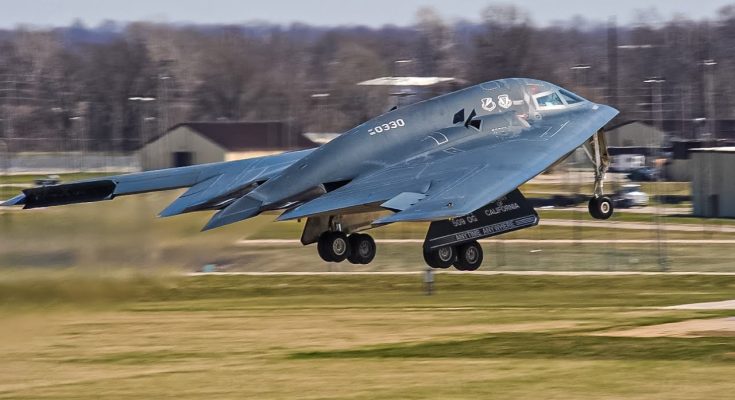A Day with the U.S. Air Force’s Cutting-Edge Stealth Bomber: The B-2 Spirit
Hidden beneath a sleek, bat-like silhouette, the B-2 Spirit remains one of the most advanced and mysterious aircraft in the world. As the only stealth bomber capable of delivering both conventional and nuclear weapons, the B-2 is a cornerstone of the U.S. Air Force’s global strike capability. Spending a day with the B-2 — from pre-flight to mission execution — offers a rare glimpse into the precision, power, and secrecy that defines this airborne marvel.
Dawn: Silent Preparations
Before the sun rises, activity is already underway at Whiteman Air Force Base, Missouri — home of the 509th Bomb Wing and the entire operational B-2 fleet. On the flight line, airmen perform detailed maintenance and weapons inspections, ensuring every component is mission-ready. The B-2’s low-observable surfaces require special care, with technicians checking the radar-absorbing material for any imperfections that could compromise its stealth profile.
Inside the secure mission planning facility, a select crew of two — the aircraft commander and mission pilot — receive classified briefings. They study enemy radar coverage, weather conditions, air refueling tracks, and precise weapons targeting data. Every mission is tailored for stealth and surprise, with routes often designed to avoid even the faintest radar signature.
Midday: Engine Start and Taxi
As the giant four-engine jet is towed from its climate-controlled hangar, its smooth, flying-wing design glints under the midday sun. With no tail, no protrusions, and a matte-gray coating, the B-2 is built to be invisible — both to the eye and to enemy sensors.
The engines spool up almost silently compared to traditional bombers, and the jet slowly taxis to the runway under escort. Ground crew perform a final “last chance” inspection, focusing on landing gear, control surfaces, and weapons bays, before giving the crew the go-ahead.
Afternoon: Into the Shadows
Once cleared, the B-2 accelerates smoothly down the runway, lifting off into the sky with minimal radar or acoustic signature. It can fly 6,000 nautical miles unrefueled, and with air-to-air refueling, it has global reach — capable of striking targets across the world without stopping.
In the air, the crew rely on advanced avionics, synthetic aperture radar, and satellite communications to stay connected with command. The B-2’s cockpit, though tight, is packed with high-tech displays, navigation systems, and defensive countermeasures. The pilots manage their flight with both precision and patience — B-2 missions can last up to 40 hours non-stop.
Evening: Precision Strike and Return
When it’s time to strike, the B-2 descends toward its release point, often flying at low altitude and high speed. Its internal bomb bays open silently, deploying JDAMs, MOPs, or B61/B83 nuclear bombs with pinpoint accuracy. Then, just as quickly, the bay doors close and the B-2 disappears into the darkness — leaving nothing but silence.
Upon return to base, the aircraft is met by a recovery crew that begins immediate post-flight inspections. Meanwhile, the mission crew debriefs in a secure facility, analyzing performance data and assessing strike effectiveness.
From start to finish, a day with the B-2 Spirit is a study in discipline, technology, and strategic dominance. It’s not just a bomber — it’s a symbol of America’s ability to strike anywhere, anytime, without ever being seen.



